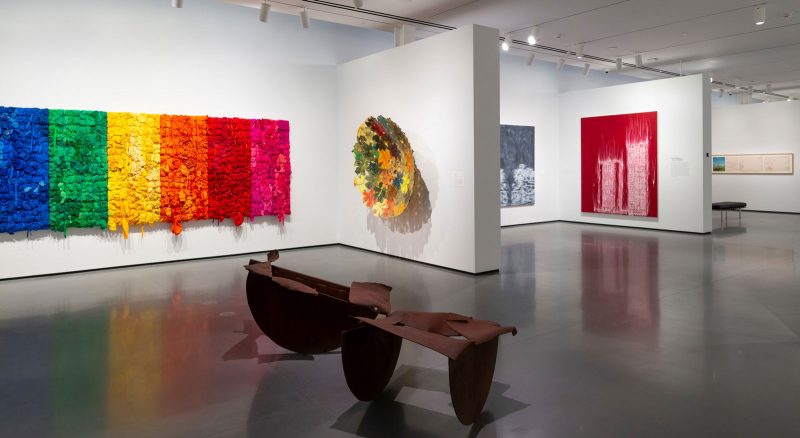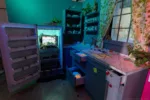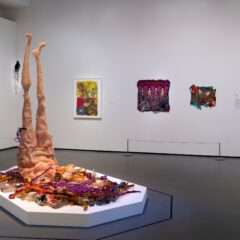
Since 1999, Pamela J. Joyner and her husband, Alfred J. Giuffrida, have been collecting abstract art by Black artists, many of whom have been underrepresented in museum collections and histories of modern art. They include global as well as American artists, presenting a more complex story of abstraction. In 2016, the collection was documented in a book, “Four Generations: The Joyner/Giuffrida Collection of Abstract Art,” which was recently updated to reflect newer purchases and includes essays by major scholars. Simultaneously, an exhibition of works pulled from their collection is travelling around the United States, and is currently on view at the Baltimore Museum of Art. Don’t miss it. Philadelphians, drive, take the train, do whatever you have to do to get yourselves to the BMA to see this show. And by the way, there are many other exhibitions on view by Black artists in the museum at this moment that you can peruse on your visit as well.
The “Four Generations” text, which is available for purchase in the museum store, is divided into five thematic sections based on the authors’ essays. The idea, of course, is that the collection concentrates on four generations of Black artists who work in abstraction. Even more importantly, the collectors want to demonstrate the fact that there are many different approaches, some of which are political. Yes, abstract art can have content.
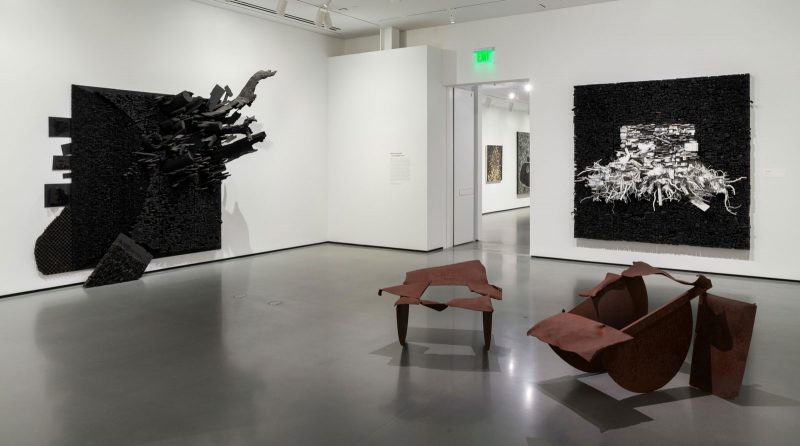
The exhibition does not follow the structure of the book, which documents hundreds of works, many more than are included in the “Generations” exhibition. “Generations” is organized around two main thematic groupings, “Remaking Abstraction” and “Expanding Abstraction,” and includes works from the BMA collection as well. The museum provides general text panels in each gallery as well as specific texts on each artist, and quite often expanded labels for individual works. They have embraced an educational approach, hoping to introduce these artists to the general public who may not be familiar with them.
Nevertheless, there are a fair number of artists who are well-known today because of the efforts of Joyner and Giuffrida, who not only collect art, but who also introduce curators and other collectors to artists and their works. Moreover, over the last 25 years, there have been quite a few books published on the art of the African Diaspora, Black art and artists, and African American art that often are used in university courses.* Art21 includes episodes on an increasing number of Black artists. Names such as Norman Lewis, Sam Gilliam, Alma Thomas, Howardina Pindell, Mark Bradford, and Martin Puryear, for instance, are now well-known, at least in the art world. The latter two represented the United States at the Venice Biennale in 2017 and 2019, respectively.
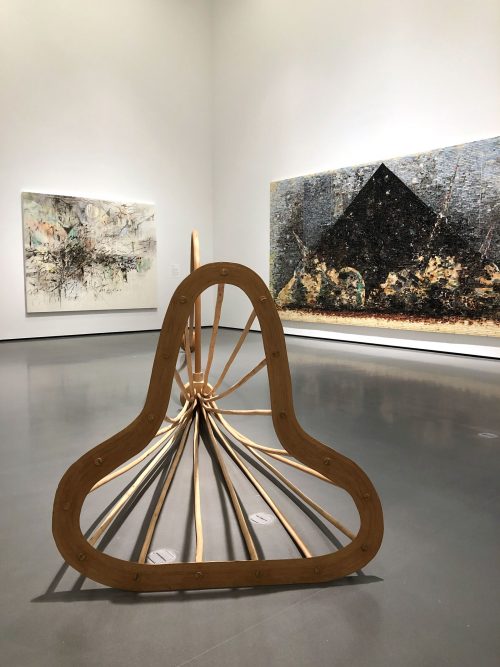
The first gallery includes Mark Bradford, Julie Mehretu, Martin Puryear, and Jack Whitten. In part because of the large scale of the pieces, it is the most impressive of the galleries. The show is beautifully laid out with exceptional care to placement and lighting, providing the much-needed breathing room required for abstract art. The BMA has taken the opportunity to show off some of its growing collection of abstract works by Black artists. Indeed, three works in this initial space belong to the BMA (Bradford, “My Grandmother Felt the Color,” Puryear, “Lever #2,” and Whitten, “9.11.01”), one to the Joyner/Giuffrida Collection (Bradford, “A Private Stranger Thinking About His Needs”), and one (Mehretu,“Fever graph (algorithm for serendipity”) is lent by the Collection of Glenn and Amanda Fuhrman NY, Courtesy the FLAG Art Foundation.
The emphasis in this grouping is clearly on new ways that artists explore abstraction today. Moreover, each of these artists demonstrate an interest in media and materials. Mehretu combines architectural forms with painting and drawing, while the other three artists create dimensional works either through sculpture or layering. Mehretu is one of the leading artists working in abstraction today; the BMA’s decision to borrow an important work by her to include in this exhibition demonstrates the curators’ understanding of that. There are several Whitten works in the Joyner/Giuffrida Collection and a substantial number of them appear in later galleries.
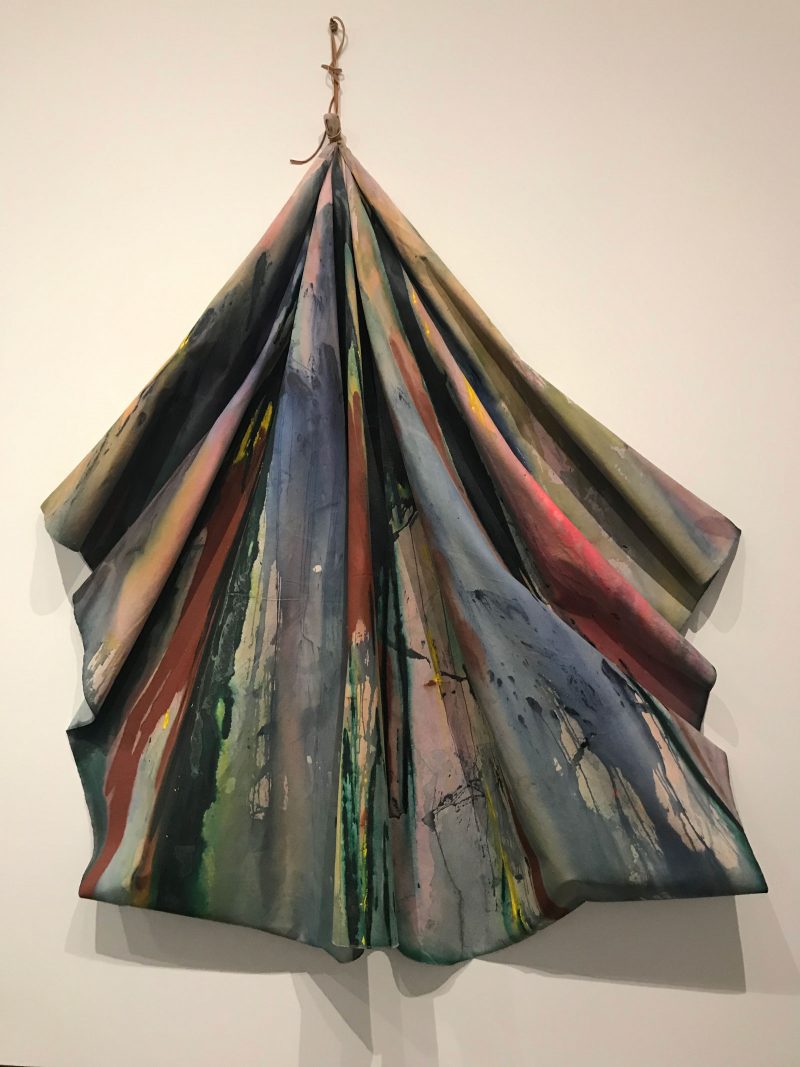
Sections of the exhibition are given over to important historical figures like Alma Thomas and Norman Lewis. Each contributed to the history of modernism. Lewis is closely associated with Abstract Expressionism and was a founding member of Spiral, an artist organization that looked for the ways that Black artists could explore civil rights. Thomas, much later in her career, was a part of the Washington, D.C. Color School that also included Sam Gilliam. Gilliam is most well-known for his draped paintings that departed completely from stretchers, and one example is included here, but he also produced many dramatic two-dimensional works. He is still an active artist, and I was fortunate to have worked with him and curator A.M. Weaver on an exhibition he did with us at Towson University in 2006, which included paintings, prints, and draped works in two of our galleries.
There are so many extremely high-quality works in “Generations” that you will spend several hours exploring the show. Some highlights include Joe Overstreet’s, “Shadow and Light,” a work that rests somewhere between painting and sculpture. Leonardo Drew, in several more current works, creates dramatic, complex and layered sculptures that refer to decay and weathering. Shinique Smith is represented by a huge fabric piece. Brightly colored, it is made from clothing and fabric that characterizes her interest in personal histories as represented by her collected materials. Taking a conceptual approach, Charles Gaines utilizes meticulous grids to create complex images.
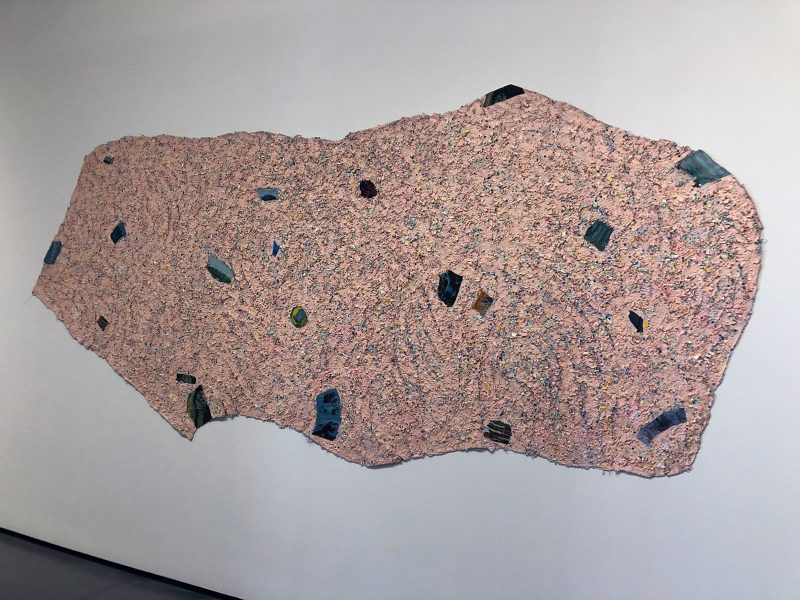
There are women included in the collection. Lorna Simpson, well-known for photography, here is represented by several works, including a large ink, acrylic, and screenprint on clayboard, “Soundlessness.” An intricate composition of photographic images collaged together in layers, it includes architectural forms and people. It is allegorical and poetic, suggesting complex histories and meanings. Howardena Pindell’s long career is represented by an unstretched and irregularly shaped canvas, “Autobiography: Japan (Tombo No Hane).” From her “Autobiography” series began after a car accident that resulted in memory loss, “Tombo No Hane” is a mixed media work that includes hole-punched paper dots. The title translates to “Dragon Fly,” possibly exploring the conceptual relationship between Japanese and Western cultures.
The Joyner/ Giuffrida Collection continues to grow in many different directions. In a separate gallery, but part of “Generations,” is Kevin Beasley’s found-object installation, “Chair of the Ministers of Defense.” It includes Moroccan rugs, kaftans, Maasai war shields and even durags. The differences between this overwhelming and cacophonic installation and the first gallery of crafted objects demonstrates the breadth of Joyner and Giuffrida’s interests. The significance of their contribution to the lives and careers of Black artists cannot be overstated. The curators’ careful inclusion of works from the BMA collection, as well as other borrowed works, results in a rich exhibition that shows the complexity and diversity of abstraction by Black artists.
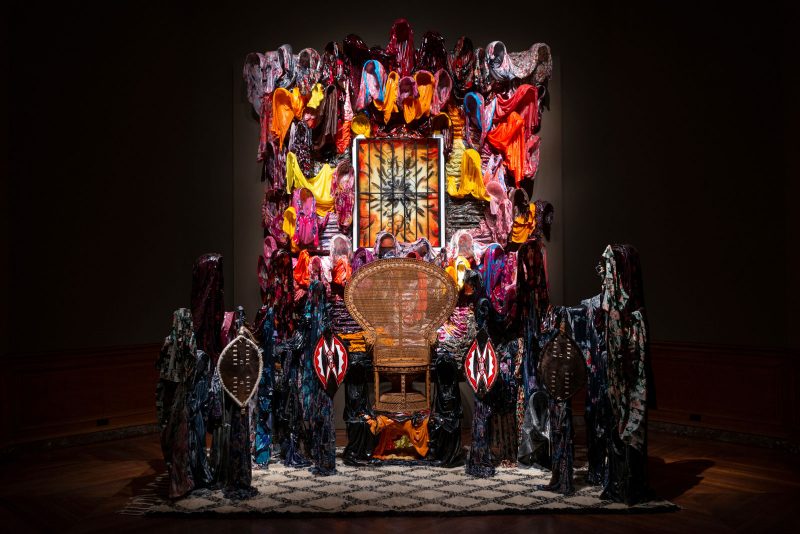
The Joyner/Giuffrida Collection, “Generations: A History of Black Abstract Art,” September 29, 2019 –January 19, 2020, Baltimore Museum of Art. Curated by Christopher Bedford, BMA Dorothy Wagner Wallis Director, and Katy Siegel, BMA Senior Research Curator and Thaw Chair at Stony Brook University.
While museum entrance is free, there is a fee for entry into the “Generations” exhibition. Guided tours are also available, but you must reserve them ahead.
*See for instance: Samella Lewis and Mary Jane Hewitt, et al. “African American Art and Artists,” 1994 and 2003; Romare Bearden and Harry Henderson, “A History of African-American Artists: From 1792 to the Present,” 1993; Sharon F. Patton, “African-American Art,” 1998; Richard J. Powell, “Black Art: A Cultural History,” 2003; Lisa Farrington,“African-American Art: A Visual and Cultural History,” 2016; Mark Godfrey, Zoé Whitley, Linda Goode Bryant, “Soul of a Nation: Art in the Age of Black Power,” 2017; and Connie H. Choi, Thelma Golden, and Kellie Jones, “Black Refractions: Highlights from The Studio Museum in Harlem,” 2019.
